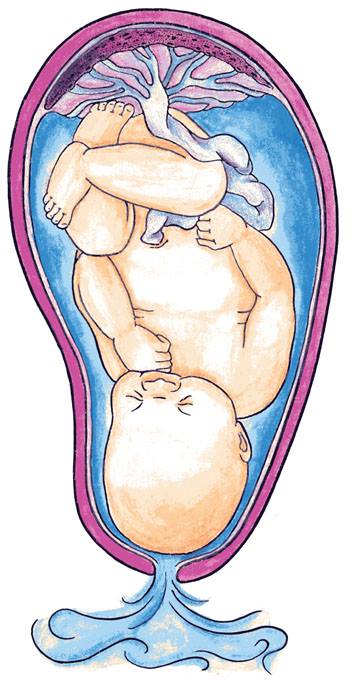Everything You Need to Know About Spontaneous Rupture of Membranes
Hey there, soon-to-be mommies and daddies!
Welcoming a little bundle of joy into your family is an experience like no other. As you embark on this exhilarating journey, arming yourself with knowledge about the spontaneous rupture of membranes (SROM) can help you navigate this fascinating phase with confidence and ease. Get ready to dive into the essentials of what SROM means for you and your baby.
What Is Spontaneous Rupture of Membranes?
Before we jump in, let us break down what the term “spontaneous rupture of membranes” (SROM) actually means. Simply put, it refers to the breaking of the amniotic sac, the cozy, protective layer of fluid where your baby has resided for the past few months. This event is colloquially known as “water breaking” and is a signal that your little one might be on their way to saying a big hello to the world!
But don’t worry, it’s a normal and natural part of the birthing process. While it may sound a bit daunting, understanding what to expect can help you stay prepared and relaxed.
When Does Spontaneous Rupture of Membranes Usually Occur?
Typically, the spontaneous rupture of membranes occurs during labor, usually in the early stages, indicating that your adventure of childbirth is about to begin. However, it can happen any time at the end of the third trimester. For some women, it might be the first sign of labor, while for others, it can happen after labor has already started.
Early Rupture of Membranes
Sometimes, SROM might happen a bit earlier than expected, before labor begins. This is often referred to as pre-labor rupture of membranes (PROM). If it occurs before 37 weeks of pregnancy, it’s known as preterm premature rupture of membranes (PPROM), which requires immediate medical attention to ensure the safety of both the mother and the unborn baby.
Signs of Spontaneous Rupture of Membranes
Wondering how you’ll know when your water breaks? Here’s what you might experience:
- A Sudden Gush or a Slow Leak: Some women feel a sudden, uncontrollable gush of clear fluid from their vagina, which is a clear giveaway. For others, it might be a slow, constant trickle, which can sometimes be mistaken for urine.
- Feeling a Popping Sensation: Occasionally, you might actually feel a pop, much like the sensation of a small balloon bursting, although not everyone experiences this.
- Wetness That Doesn’t Stop: If you notice that you’re continuously feeling wet down there and it’s not due to urine or vaginal discharge, it’s a good idea to get checked out.
When you’re not sure if you’re experiencing SROM, the best thing to do is call your healthcare provider. They will guide you through the next steps and help ensure everything is going smoothly with your pregnancy.
What to Do After Your Water Breaks
If your water does break, take a deep breath—there’s no need to panic. Keep calm and remember these immediate steps:
- Take Note of the Time: Record the time when your water breaks. Your healthcare team will want to know this information.
- Observe the Fluid: Look at the color and smell of the fluid. It should be clear or slightly pink and have a mild odor. If it’s greenish, brown, or has a strong odor, contact your healthcare provider promptly as it could signify an infection or that the baby has had a bowel movement (meconium) in utero.
- Stay Clean and Protected: Use a sanitary pad (not a tampon) to absorb the fluid and prevent any infections.
- Get in Touch with Your Doctor: Even if you’re not experiencing any contractions yet, give your healthcare provider a call. They’ll give you instructions on what to do next, which may include heading to the hospital or birthing center.
Becoming a parent comes with its share of surprises, but the spontaneous rupture of membranes shouldn’t be one of them. Knowing what SROM is, what to look out for, and how to react can make the difference in your childbirth experience. So, embrace this exciting milestone with knowledge and positivity. Your adventure is just about to get even more amazing!
And remember, if you’re ever in doubt, your healthcare provider is there to support you through every step of this beautiful journey. Stay tuned for more in-depth insights as we continue to explore the intricacies of spontaneous rupture of membranes together!

5 Things Parents Should Know in Preparing for Spontaneous Rupture of Membranes
As you get closer to your due date, here are five key things to keep in mind as you prepare for the possibility of your amniotic sac breaking:
1. Understand and Recognize the Signs
Being familiar with the signs of SROM is crucial. Although it’s often depicted as a dramatic event in movies, it can be less obvious in real life. Make sure you and your birthing partner know what to look for, so you can act swiftly and appropriately.
2. Pack Your Hospital Bag Early
You might not know when your water will break, so it’s a good idea to have your hospital bag packed and ready to go by the time you reach your third trimester. Include essentials for both you and the baby, as well as any comfort items that will make your stay more pleasant.
3. Plan Your Route and Mode of Transportation
Decide in advance how you’ll get to the hospital or birthing center. Whether you’re driving yourself, have a family member on call, or plan to use a ride-sharing service, having a clear plan can ease your mind when the time comes.
4. Keep Your Healthcare Provider’s Contact Information Handy
Store your healthcare provider’s contact details in an easily accessible place, like your phone or a physical copy in your hospital bag. Quick communication is key if you suspect SROM or have any concerns.
5. Learn About Potential Interventions
Discuss with your doctor what the plan of action will be if your water breaks and labor doesn’t begin naturally. Knowing the possible medical interventions, like induction, can help you prepare mentally and make more informed decisions.
Aware of the key signs and equipped with a plan, you’ll be able to approach the grand finale of your pregnancy journey with poise and positivity. Keep educating yourselves, delightful parents-to-be, and embrace the exciting changes ahead with open arms and joyous hearts!
See more great Things to Do with Kids in New Zealand here. For more information see here
Disclaimer
The articles available via our website provide general information only and we strongly urge readers to exercise caution and conduct their own thorough research and fact-checking. The information presented should not be taken as absolute truth, and, to the maximum extent permitted by law, we will not be held liable for any inaccuracies or errors in the content. It is essential for individuals to independently verify and validate the information before making any decisions or taking any actions based on the articles.




